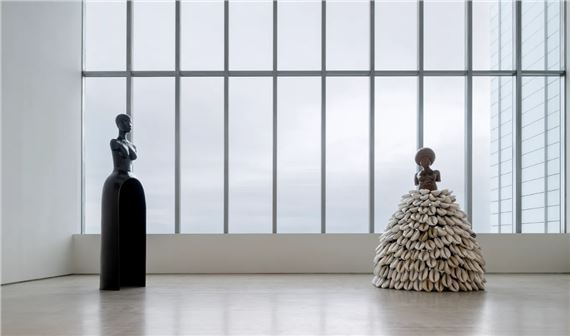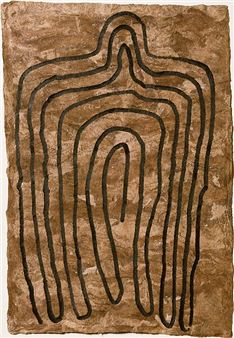Simone Leigh: Recent Sculptures
Simone Leigh has spent more than 20 years exploring Black female subjectivity. Her practice across sculpture, video and installation includes works that merge the female form with architectural structures and materials to draw attention to histories that have often been overlooked or erased.
These two recent sculptures focus on womenÔÇÖs unacknowledged acts of work, community and care. They demonstrate LeighÔÇÖs ongoing interest in African diasporic aesthetics, vernacular architecture, and the idea of the body as a vessel, or metaphor for shelter and refuge.
Bisi (2023) honours the late Nigerian curator Bisi Silva (1962ÔÇô2019), whose vision and influence shaped contemporary art on the African continent and beyond. The sculpture is an anonymous, armless female bust with closely cropped hair and stands at 2.7 metres tall. Its hollow skirt, scaled directly to fit the artistÔÇÖs body, reflects LeighÔÇÖs interest in the skirt as a vessel.

Recommended for you
Simone Leigh has spent more than 20 years exploring Black female subjectivity. Her practice across sculpture, video and installation includes works that merge the female form with architectural structures and materials to draw attention to histories that have often been overlooked or erased.
These two recent sculptures focus on womenÔÇÖs unacknowledged acts of work, community and care. They demonstrate LeighÔÇÖs ongoing interest in African diasporic aesthetics, vernacular architecture, and the idea of the body as a vessel, or metaphor for shelter and refuge.
Bisi (2023) honours the late Nigerian curator Bisi Silva (1962ÔÇô2019), whose vision and influence shaped contemporary art on the African continent and beyond. The sculpture is an anonymous, armless female bust with closely cropped hair and stands at 2.7 metres tall. Its hollow skirt, scaled directly to fit the artistÔÇÖs body, reflects LeighÔÇÖs interest in the skirt as a vessel.
Artists on show
Related articles
Shown in the Sunley Gallery, Bisi (2023) and Untitled (2023ÔÇô4) echo across seas and histories, connecting the female body to the movements of people, objects, and ideas.

 ARTISTS
ARTISTS
















